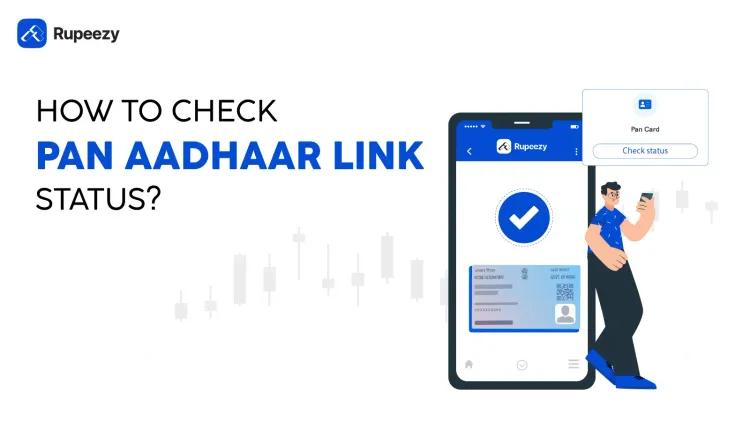List of the Best Banks in India 2025 (Updated List)


00:00 / 00:00
Are you on the look out for the best bank in India for your banking requirements? This blog covers the top banks in India in public and private sector. Banking is a flourishing segment in India with many players offering core banking, deposits, loans, digital banking, investments, and business banking services
Banks are not merely service providers but promote financial inclusion to the last mile and encourage investments and savings. Let us evaluate which bank is best in India based on the strength of its assets, reach, and key financial metrics.
What Makes a Bank the Best Bank in India?
Size: The size of a banking institution reflects its strength in terms of total assets, revenue, net income, client base, branches, and ATM network. Larger the size of the bank, higher the competitive advantage in the market.
Banking Services: The complete range of banking services a bank offers to its customers from core banking products to credit and loan products, commercial banking etc. cater to various financial needs of its customers. WIder product offerings bring the largest market share and expansion.
Asset Quality: The quality of assets a bank maintains is a significant indicator of bank’s financial health, since it impacts the bank’s profitability, income, and lending capacity. High NPAs (Non-Performing Assets) are a sign of credit risk and high provisions for default and write-offs in future.
Distribution: The number of branches, ATMs, and distribution of products and services shows how far and wide a bank is able to capture the market opportunity and how well it can serve customers.
Reputation: In the era of social media and internet, a bank’s reputation, brand value and customer feedback can have a critical impact on its future prospects. Banks invest in marketing, branding, customer service, and focus on customer experience to build a strong reputation.
Technical Capability: Robust and secure technological infrastructure are the backbone of the banking system. Investment and upgradation to latest technology ensures security and agility in every function for a seamless customer experience.
Digital Offering: In the digital first era, a swift and secure digital banking experience and services make banking convenient, attracts customers, and brings incremental business.
Regulatory Compliance: Banking being a heavily regulated industry, banks’ commitment to compliance and regulatory norms is essential.
Competitive Standing: In a highly competitive environment, interest rates on deposits, loans, transparent and fair charges and fees ensure an edge over competitive players.
Allied Offerings: Other than banking products, banks offer allied products such as insurance, mutual funds, third-party investments, physical gold etc. to cater to a broad range of customer needs. These offerings can be differentiators among banks.
Financial Ratios: Banks are assessed on certain key financial metrics such as CAR (Capital Adequacy Ratio), Gross and Net NPAs (Non-Performing Assets), Provision Coverage Ratio, Return On Assets, CASA Ratio, Net Interest Margin, Cost To Income etc. These ratios tell about a banking institution’s solvency, profitability, stability, and efficiency of operations.
The Top 10 Banks in India 2025
The below table for the top banks in India is based on data as of December 11, 2024.
Bank Name | Net Interest Income (Rs. Cr) | Net Profit (Rs. Cr) | Net Interest Margin | Gross NPA | Market Capitalization (Rs. Cr) |
108,530 | 60,810 | 3.6% | 1.24% | 1,428,138 | |
74,306 | 40,880 | 4.53% | 2.26% | 938,886 | |
1,59,876 | 61,077 | 3.43% | 2.24% | 774,211 | |
25,993 | 13,782 | 5.28% | 1.39% | 356,815 | |
49,894 | 24,861 | 4.07% | 4.07% | 357,011 | |
20,616 | 8977 | 4.28% | 1.92% | 76,681 | |
44,721 | 17,788 | 3.98% | 2.92% | 135,970 | |
40,083 | 8,244 | 7.71% | 5.73% | 126,962 | |
36,570 | 13,648 | 3.10% | 4.76% | 98,840 | |
36,566 | 14,554 | 3.05% | 4.23% | 99,486 |
Detailed Overview of the Best Banks in India
1. HDFC Bank
Incorporated in August 1994, HDFC Bank is India’s leading private sector bank, known as the best bank to open an account in India, with a distribution network of 9,092 branches and 20,993 ATMs across 4,088 cities/towns. It has an international presence with 4 overseas branches and 5 representative offices. HDFC Bank offers Retail Banking, Home Loans, Corporate Banking, Commercial & Rural Banking and Treasury Operations.
HDFC Ltd was amalgamated with and into HDFC Bank on July 01, 2023.
Total Assets: Rs. 3,617,623 Cr
Total Deposits: Rs. 2,379,786 Cr
Total Advances: Rs. 2,484,861 Cr
Net Interest Income: Rs. 108,530 Cr
Net Interest Margin: 3.6%
Gross NPA: 1.24%
Net NPA: 0.33%
Capital Adequacy Ratio: 18.8%
2. ICICI Bank
ICICI Bank was incorporated in 1994 as a part of the ICICI group. In 1999, ICICI became the first Indian company and the first bank or financial institution from non-Japan Asia to be listed on the New York Stock Exchange.
It offers a wide range of banking products and financial services to corporate and retail customers through a variety of delivery channels in areas of retail banking, investment banking, life, non-life insurance, venture capital and asset management. ICICI Bank has a network of 6,613 branches and 16,120 ATMs across India and also has a presence in 11 countries.
Total Assets: Rs. 1,871,514 Cr
Total Deposits: Rs. 1,412,825 Cr
Total Advances: Rs. 1,184,406 Cr
Net Interest Income: Rs 74,306 Cr
Net Interest Margin: 4.53%
Gross NPA: 2.26%
Net NPA: 0.4%
Capital Adequacy Ratio: 16.33%
Provision Coverage Ratio: 80.3%
3. State Bank Of India (SBI)
State Bank Of India is the largest banking and financial services organization in India, with an asset base of over Rs. 61 trillion. It serves over 50 crore customers through its vast network of over 22,500 branches, 63,580 ATMs/ADWMs, 82,900 correspondent outlets. The market share of SBI stood at 22.55% in Deposits and 19.06% in Advances as on March ‘24.
SBI is a Fortune 500 company and the only Indian bank on this list. It is a public sector bank and the largest bank in India with a rich heritage and legacy of over 200 years.
Total Assets: Rs. 6,179,694 Cr
Deposits: Rs. 49,16,077 Cr
Advances: Rs. 37,67,535 Cr
Net Interest Income: Rs. 1,59,876 Cr
Net Interest Margin: 3.43%
Gross NPA: 2.24%
Net NPA: 0.57%
Capital Adequacy Ratio: 14.28%
4. Kotak Mahindra Bank
Kotak Mahindra is one of India's leading banking and financial services groups, offering a wide range of financial services. The bank along with its subsidiaries offers consumer and commercial banking, investment banking, treasury, stock broking, vehicle finance, advisory services, asset management, life insurance, and general insurance.
The bank has 2013 branches and serves 5.2 Cr customers.
Total Assets: Rs. 600,357.05 Cr
Deposits: Rs. 448,953.75 Cr
Advances: Rs. 391,729 Cr
Net Interest Income: Rs. 25,993 Cr
Net Interest Margin: 5.28%
Gross NPA: 1.39%
Net NPA: 0.34%
Capital Adequacy Ratio: 20.5%
CASA ratio: 45.5%
5. Axis Bank
Axis Bank is the third largest private sector bank in India. It was incorporated as UTI Bank in 1993. It offers the entire spectrum of financial services to customer segments covering large and mid corporates, MSME, agricultural and retail businesses.
Axis Bank has 5377 domestic branches and 16,000+ ATMs. Axis Bank is the 4th largest credit card player in India.
Axis Bank has achieved consistent growth with a 5-year CAGR of 13% in Total Assets and 15% each in Deposits and Advances between FY 2019 to FY 2024.
Total Assets Rs. 1,477,209 Cr
Deposits: Rs. 1,068,641 Cr
Advances: Rs. 965,068 Cr
Net Interest Income: Rs. 49,894 Cr
Net Interest Margin: 4.07%
Gross NPA: 1.43%
Net NPA: 0.31%
Capital Adequacy Ratio: 16.63%
Provision Coverage Ratio: 79%
CASA: Rs. 459,401 Cr
6. IndusInd Bank
IndusInd Bank is one of India's leading private banks. It caters to over 4 crore customers across the country, including individuals, large corporations, various government entities and PSUs. Its banking network spans 3040 branches/ banking outlets and 3011 ATMs spread across India, covering 1,61,000 villages, and with representative offices in London, Dubai, and Abu Dhabi.
The Bank offers a wide range of products and services for individuals and corporates, including microfinance, personal loans, personal and commercial vehicle loans, credit cards, and SME loans.
Total Assets: Rs. 514,935.14 Cr
Deposits: Rs. 384,586 Cr
Advances: Rs. 343,298 Cr
Net Interest Income: Rs. 20,616 Cr
Net Interest Margin: 4.28%
Gross NPA: 1.92%
Net NPA: 0.57%
Capital Adequacy Ratio: 17.23%
Credit to Deposit Ratio 89.22%
7. Bank Of Baroda
Bank of Baroda is India’s leading public sector bank with a strong domestic presence supported by self-service channels. The Bank’s distribution network includes 8,200+ branches, 10,000+ ATMs, 1,200+ self-service e-lobbies and 20,000 Business Correspondents. The Bank has a significant international presence with a network of 100 branches/offices of subsidiaries, spanning 20 countries.
Total Assets Rs. 1,585,797 Cr
Deposits: Rs. 1,326,957 Cr
Advances: Rs. 1,065,781 Cr
Net Interest Income: Rs. 44,721 Cr
Net Interest Margin: 3.18
Gross NPA: 2.92%
Net NPA: 0.68%
Capital Adequacy Ratio: 16.31%
Provision Coverage Ratio: 93.3%
CASA: Rs. 4,66,401 Cr
8. Punjab National Bank
Punjab National Bank (PNB) is the second largest Public Sector Bank in India with a glorious history of more than 125 years. PNB was India’s first Swadeshi Bank that commenced operations in 1895 from Lahore.
Punjab National Bank has a total of 51,519 touch points with a network of 10,092 domestic branches, 2 International branches, 12645 ATMs & 28782 Business Correspondents.
Total Assets Rs. 1,561,835 Cr
Deposits: Rs. 1,369,712 Cr
Advances: Rs. 934,430 Cr
Net Interest Income Rs. 40,083 Cr
Net Interest Margin (NIM): 7.71%
Gross NPA: 5.73%
Net NPA: 0.73%
Capital Adequacy Ratio: 15.97
Provision Coverage Ratio: 87.9%
CASA: Rs. 4,66,401 crore
9. Union Bank Of India
Union Bank of India is one of the leading public sector banks in the country. The Bank is a listed entity, and the Government of India holds 74.76 % in Bank’s total paid-up capital.
Headquartered at Mumbai, the bank was registered in 1919 as a limited company. In 2020, Andhra Bank and Corporation Bank were amalgamated into Union Bank of India. UBI has a network of 8,500+ domestic branches, 9,100+ ATMs, 74,000+ employees and 22,000+ Business Correspondents.
Total Assets Rs. 1,391,957 Cr
Deposits: Rs. 1,221,528 Cr
Advances: Rs. 870,776 Cr
Net Interest Income: Rs. 36,570 Cr
Net Interest Margin: 3.10%
Gross NPA: 4.76%
Net NPA: 1.03%
Capital Adequacy Ratio: 16.97%
Provision Coverage Ratio: 93.49%
10. Canara Bank
Canara Bank was founded in July 1906, at Mangalore, then a small port town in Karnataka. Over the years, the Bank has been scaling up its market position to emerge as a major financial Conglomerate with as many as thirteen subsidiaries/sponsored institutions in India and abroad. Canara Bank services over 11.53 crore customers through a network of 9,658 branches and 12,191 ATMs spread across all Indian states and Union Territories.
Total Assets Rs. 1,491,541 Cr
Deposits: Rs.12,14,951 Cr
Advances: Rs. 9,08,182 Cr
Net Interest Income: Rs. 36,566 Cr
Net Interest Margin: 3.05%
Gross NPA: 4.23%
Net NPA: 1.27%
Capital Adequacy Ratio 16.28%
Provision Coverage Ratio 89.10%
CASA: Rs. 3,92,327 Cr
Best Banks in India for Fixed Deposits
Bank Name | Tenure 1 Year (Interest Rate % Compounded Quarterly) |
Bandhan Bank | 8.05 |
IndusInd Bank | 7.75 |
RBL Bank | 7.50 |
Karnataka Bank | 7.35 |
YES Bank | 7.25 |
Bank Name | Tenure 2 Years (Interest Rate % Compounded Quarterly) |
RBL Bank | 8.00 |
IndusInd Bank | 7.75 |
DCB Bank | 7.5 |
Canara Bank | 7.30 |
IDFC Bank | 7.25 |
Bank Name | Tenure 3 Years (Interest Rate % Compounded Quarterly) |
DCB Bank | 8.00 |
RBL Bank | 7.75 |
Canara Bank | 7.5 |
YES Bank | 7.30 |
IndusInd Bank | 7.25 |
Bank Name | Tenure 5 Years (Interest Rate % Compounded Quarterly) |
DCB Bank | 8.00 |
Dhanlaxmi Bank | 7.75 |
IndusInd Bank | 7.5 |
YES Bank | 7.30 |
RBL Bank | 7.25 |
Best Banks in India for Savings Accounts
Bank Name | Interest Rate % (p.a.) | Minimum Balance |
HDFC Bank | 3.00 - 3.50 | Rs. 2,500 - Rs. 10,000 |
Kotak Mahindra Bank | 3.00 - 4.00 | Rs. 10,000 |
State Bank Of India | 2.70 - 3.00 | Nil |
Union Bank of India | 2.75 - 2.90 | Nil |
IDFC First Bank | 3.00 - 7.25 | Rs. 10,000 - Rs. 25,000 |
ICICI Bank | 3.00 - 3.50 | Nil - Rs. 1,00,000 |
RBL Bank | 3.50 - 7.50 | Nil - Rs. 5,000 |
Best Banks in India for Home Loans
Bank Name | Home Loan Interest Rates | |
From % | To % | |
City Union Bank | 8.25 | 10.5 |
Bank of Maharashtra | 8.35 | 10.90 |
Union Bank of India | 8.35 | 10.75 |
Indian Overseas Bank | 8.40 | 10.60 |
Bank of Baroda | 8.40 | 10.60 |
How to Choose the Right Bank for You
You can choose the best bank for you based on a few simple criteria:
Bank’s reputation: Choose a bank that is large-sized and with good track record for the past many years. Larger the size of a bank, the lower the probability of large-scale failure or threat to customers’ money.
Services: Select a bank that meets your comprehensive financial needs such as banking transactions, deposits, locker facility, home loan and other loans, credit cards, investment services, NRI/forex services, etc.
For example, it is convenient to have your credit card, loans, business accounts, etc. from your primary bank to save the hassle of multiple payment points and maintain a good credit history with one institution for favorable terms.
Location: It is convenient to have your bank’s branch close to your location simply for proximity in case you need to visit the branch for any services such as new family accounts, business banking, or bank lockers.
Charges and Interest Rates: Different banks have a different charge structure for various banking services. It is advisable to go through banks’ charge structure to save penalties or additional charges. Similarly, some banks offer higher interest rates on savings, FDs, loans, etc. You can compare them and choose the one with the best terms.
Digital Platform: A bank’s digital platform and interface matters since most banking transactions can be completed online. Check online feedback and reviews about a bank’s digital banking services.
Security: Banks are strictly regulated and expected to adhere to compliance and security norms. It is important to select a bank that adheres to mandatory compliance guidelines and security measures to prevent fraud, personal data, and financial information, especially for digital banking services.
Conclusion
There are many choices available for your banking requirements. There are reputed brands in the banking space but the one that meets your needs for savings, deposits, investments, credit, long term loans, is responsive in attending to your grievances and feedback, and offers swift and secure digital banking solutions is the best for you.
Explore Rupeezy for your investment-related financial requirements. Invest and trade in stocks, commodities, derivatives, mutual funds, and margin trading with advance tools. Open a demat account today.
FAQs
Q. Which is the biggest and best bank in India?
State Bank Of India is the biggest bank in India by assets, branch network, and client base served.
Q. Which is the richest bank in India?
HDFC Bank is the richest and largest bank in India by market capitalization.
Q. Which is the oldest bank in India?
State Bank Of India is the oldest bank in India originating in 1806 as Bank Of Calcutta. It was merged with Bank Of Madras and Bank Of Bombay in 1843 and renamed to State Bank Of India in 1955.
Q. Who is the No.1 private bank in India?
HDFC Bank is the number 1 private bank in India by market capitalization, branch network, and assets.
Q. Who is the No.1 public sector bank in India?
State Bank Of India is the No. 1 public sector bank in India with the largest branch network, asset size, and customer base.
Check Out These Related Articles |
The content on this blog is for educational purposes only and should not be considered investment advice. While we strive for accuracy, some information may contain errors or delays in updates.
Mentions of stocks or investment products are solely for informational purposes and do not constitute recommendations. Investors should conduct their own research before making any decisions.
Investing in financial markets are subject to market risks, and past performance does not guarantee future results. It is advisable to consult a qualified financial professional, review official documents, and verify information independently before making investment decisions.

All Category










